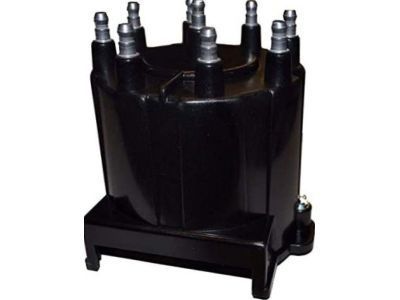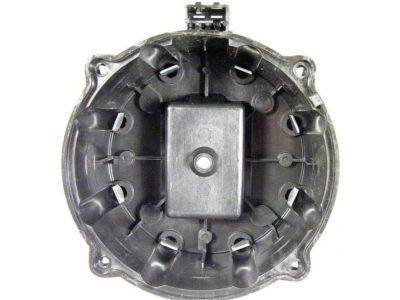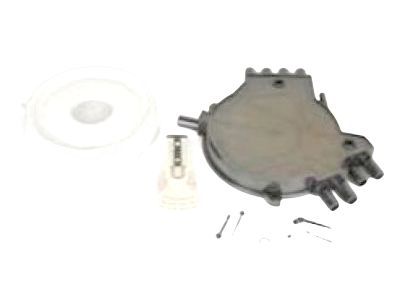My Garage
My Account
Cart
Genuine Cadillac Fleetwood Distributor Cap
Ignition Distributor Cap- Select Vehicle by Model
- Select Vehicle by VIN
Select Vehicle by Model
orMake
Model
Year
Select Vehicle by VIN
For the most accurate results, select vehicle by your VIN (Vehicle Identification Number).
4 Distributor Caps found
Cadillac Fleetwood Cap,Distributor
Part Number: 19166099$33.07 MSRP: $62.40You Save: $29.33 (47%)Ships in 1-2 Business DaysCadillac Fleetwood Cap Asm,Distributor
Part Number: 19110932$25.03 MSRP: $44.90You Save: $19.87 (45%)Cadillac Fleetwood Cap Asm,Distributor
Part Number: 19110931$21.68 MSRP: $38.88You Save: $17.20 (45%)Ships in 1-3 Business Days
Cadillac Fleetwood Distributor Cap
Cadillac Fleetwood vehicles' Distributor Cap is one of the main components of an ignition method whose function is to shield the inner parts and oversee the movement of current from the ignition coil to the spark plug wires. It has posts just like the engine cylinder with differences such as two spark plugs for every cylinder or wasted spark. The rotor is driven by the camshaft and is located under the cap that brings electrical current to the spark plugs in turn in the right firing sequence. This needs to be changed frequently; otherwise, there is a high likelihood of noticing symptoms such as excessively shaking mixed with stalling and backfiring. Being a notorious enemy of the engine, water can seep through the distributor and call for a strict examination of the O-ring or gasket. In general, the Distributor Cap is a very significant, though rather uncomplex element of the Cadillac Fleetwood's ignition system.
Each OEM Cadillac Fleetwood Distributor Cap we offer is competitively priced and comes with the assurance of the manufacturer's warranty for the part. Furthermore, we guarantee the speedy delivery of your orders right to your doorstep. Our hassle-free return policy is also in place for your peace of mind.
Cadillac Fleetwood Distributor Cap Parts Questions & Experts Answers
- Q: How to remove and install a distributor cap and rotor on Cadillac Fleetwood?A: Since the advent of vehicles, ignition systems have undergone massive changes. Most modern vehicles use coil packs instead of distributors which eliminate the need for distributor caps or rotors. These parts have been replaced by camshaft and crankshaft sensors. The timing is now controlled by the PCM (Powertrain Control Module) which makes it non-adjustable. However, some basic information is provided for vehicles still operating with a distributor cap and rotor. It is recommended to check this while doing a physical inspection of the distributor cap and rotor during checking plug wires. Look out for such things as damage to the distributor cap like a tower that has broken off or a crack in its body and external carbon tracks. Use a bright light to check inside of the cap for charred or eroded terminals and carbon tracks. Check if there is any damage to the inside terminals or the rotor button. If there are damaged or cut terminals, it could mean either wrong installation or age on the distributor housing. To remove and install the distributor cap and rotor, disconnect negative battery cable, record wire placement. In order to separate from distributor housing turn clockwise 180 degrees on two retaining screws at cap's top then depress them till they stop inside two depressions located at extreme angles from each other on top face of the cap's rim side surface opposite to each other. Take off cap in order to see ignition rotor beneath it. Remove two hold down screws keeping rotor on distributor shaft being careful to remember how rotor was positioned before removal. Slide it down onto distributor shaft when installing rotor aligning it along its proper path so that it fits squarely on top of distributor shaft; then make sure that its position is vertical and rigidly set up into place without having any possibility to move around when proper installer pressure is applied onto it in perpendicular plane against whole system being mounted thereby providing exact alignment conditions so every component involved would be accurately installed relative one another ensuring tight engagement between mating surfaces where sealing function performed accordingly as if all mating surface contacted everywhere one another enough such that closes gaps tight enough ensuring no leakages whatsoever during entire life cycle regardless whether operating with single gasketing system or multiple gaskets employed simultaneously across different locations thereon in cases when both types can be used together like example shown above. As a result, make sure distributor cap seats properly and is squarely aligned with distributor housing. Finally, depress and rotate cap screws clockwise 180 degrees to hold it in place.







